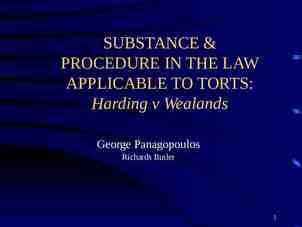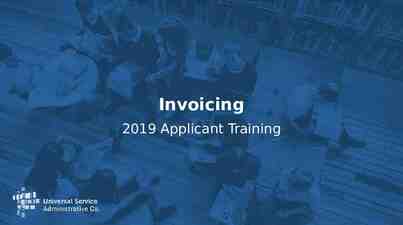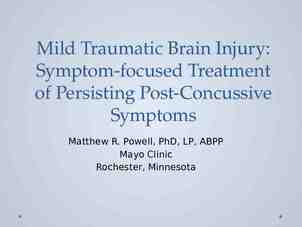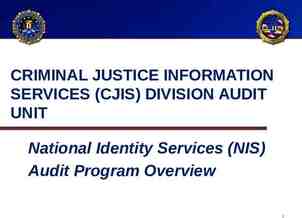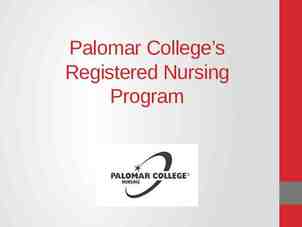B2 Legislation and Guidance
13 Slides96.09 KB

B2 Legislation and Guidance

B2 Legislation and guidance on conflicts of interest, balancing resources and minimising risk Organisations, legislation and guidance that influence or advise on ethical issues. All legislation and guidance must be current and applicable to England, Wales or Northern Ireland. National Health Service (NHS) The Department of Health (DH) Launched in 1948 from the ideal that good health care should be available for all, regardless of wealth Provides a wide range of health services, the vast majority of which are free at the point of delivery for people legally resident in the UK Made up of four, mainly independent, publicly funded health care systems: NHS (England), Health and Social Care in Northern Ireland, NHS Wales and NHS Scotland A ministerial department of the government Helps people to live better for longer Leads, shapes and funds health and care in England by creating national policies and legislation Organisations, e.g. National Health Service (NHS), Department of Health (DH), National Institute for Care Excellence (NICE), Health and Safety Executive (HSE). Outstanding Resources 2017

B2 Legislation and guidance on conflicts of interest, balancing resources and minimising risk Organisations, e.g. National Health Service (NHS), Department of Health (DH), National Institute for Care Excellence (NICE), Health and Safety Executive (HSE). National Institute for Health and Care Excellence (NICE) Health and Safety Executive (HSE) Outstanding Resources 2017 Set up in 1999 to help prevent ill health and promote healthier lifestyles Provides national guidance and advice to improve health and social care, officially only in England, but does provide certain NICE products and services to Wales, Scotland and Northern Ireland Accountable to its sponsor department, the DH, but operates independently from the government Role is to improve outcomes for people using the NHS and other public health and social care services Set up as the national independent watchdog for work-related health, safety and illness Executive public body, sponsored by the Department for Work and Pensions Acts in the public interest to reduce work-related death and serious injury across the UK’s workplaces Shapes and reviews policies, reviews regulations, produces research and statistics and enforces the law

B2 Legislation and guidance on conflicts of interest, balancing resources and minimising risk Legislation, e.g. Mental Health Act 2007, Human Rights Act 1998, Mental Capacity Act 2005, National Health Service Act 2006 Section 140, Equality Act 2010, Care Act 2014. Mental Health Act 2007 Human Rights Act 1998 Mental Capacity Act 2005 National Health Service Act 2006 section 140 Equality Act 2010 Care Act 2014 Outstanding Resources 2017 In pairs, or three’s, pick one of the Act’s opposite (these must all be covered by the class). Produce a presentation on each act and a ‘factsheet handout’ that summarises the main points of the act. This factsheet needs to be given to the whole class. In your presentation give some examples of how the act has had an impact on an individuals health/care needs.

B2 Legislation and guidance on conflicts of interest, balancing resources and minimising risk Legislation, e.g. Mental Health Act 2007, Human Rights Act 1998, Mental Capacity Act 2005, National Health Service Act 2006 Section 140, Equality Act 2010, Care Act 2014. Molly is 50 and has learning difficulties. She is in hospital recovering from a severe stroke. Her social worker has told her that her only choice, when she is discharged from hospital, is to go into a residential home. Molly is very unhappy about this as she would like to stay in her own home. Explain how the Care Act 2014 would help Molly. Explain how the social worker has not followed the guidelines for professionals working with individuals. Outstanding Resources 2017

B2 Legislation and guidance on conflicts of interest, balancing resources and minimising risk Legislation, e.g. Mental Health Act 2007, Human Rights Act 1998, Mental Capacity Act 2005, National Health Service Act 2006 Section 140, Equality Act 2010, Care Act 2014. https://www.youtube.com/watch?v pz5Ecovjs4w Human Rights Inquiry case study - The 'Bournewood' ruling (Make notes) Which parts of the Mental Health Act 2007, listed below, do you think came about as a result of the Bournewood Case? Do some research into the details of this case. Write an article for a magazine that covers the facts and ethics of this case, including how other Acts now help protect people like HL. Changes the definition of mental disorder Makes it no longer possible for patients to be compulsorily detained, unless appropriate treatment and all other information is available to that patient Broadens the role of practitioners Gives relatives and civil partners more rights Provides more help, such as age-appropriate services, independent mental health advocacy, quicker tribunals, more safeguards around electro-convulsive therapy (ECT), and supervised community treatment Outstanding Resources 2017

B2 Legislation and guidance on conflicts of interest, balancing resources and minimising risk Guidance, e.g: the DH Decision Support Tool, five-step framework, NICE and NHS guidance on Care Pathways and Care Plans, Managing Conflicts of Interest: Guidance for Clinical Commissioning Groups (2013) (NHS), HSE guidance on risk assessments. If an individual needs extra support from a healthcare setting there will be an assessment by a professional using a screening tool called the NHS Continuing Healthcare Checklist. If results suggest that the individual is eligible for NHS continuing healthcare, a full up-to-date assessment of their needs will be arranged using a tool called the Decision Support Tool. Multi-disciplinary teams set out the individual’s needs in relation to twelve care domains, and then make a recommendation as to whether the person is entitled to NHS continuing health care. Outstanding Resources 2017 https://www.youtube.com/watch ?v mlIrKEHP-WU 06 Step 2 – the Full Assessment: NHS Watch the clip. What is the care needs assessment? What is a multi-disciplinary team? What is the ‘Decision support tool’? What are the 12 care domains? (Give some examples).

B2 Legislation and guidance on conflicts of interest, balancing resources and minimising risk Guidance, e.g: the DH Decision Support Tool, five-step framework, NICE and NHS guidance on Care Pathways and Care Plans, Managing Conflicts of Interest: Guidance for Clinical Commissioning Groups (2013) (NHS), HSE guidance on risk assessments. Five-step framework Step 2 Step 1 Think before you act: Recognise the decision or issue: Think about the issue and summarise What is the actual issue or problem? so that it is clear to you. Are you being asked to do something Consider the various options and that is wrong or illegal? consequences. Are you aware of others involved who Step 5 Consider who may be affected and ask are behaving unethically or illegally? Proceed and evaluate: Review and others for their views. move on: Communicate the decision Celebrate achievement Measure the impact Step 4 Step 3 Test your decisions: Decide on a course of action. Review your decision against ethics and What is your responsibility in this values. process? Consulate relevant policies and Review all of the relevant information procedures/legislations/law etc. Assess any risks Consult others about your actions Decide on the best course of action Outstanding Resources 2017

B2 Legislation and guidance on conflicts of interest, balancing resources and minimising risk Guidance, e.g: the DH Decision Support Tool, five-step framework, NICE and NHS guidance on Care Pathways and Care Plans, Managing Conflicts of Interest: Guidance for Clinical Commissioning Groups (2013) (NHS), HSE guidance on risk assessments. NICE and NHS guidance on Care Pathways and Care Plans The steps taken to care for and treat a service user are called care pathways; care plans are drawn up for the service user based on the care pathway. pathways implement national standards of care, such as those produced by NICE and the NHS. They are developed by multi-disciplinary teams. They identify who carries out key parts of the care or treatment and where care or treatment should be delivered. pathways usually include decision support systems to help make ethical decisions about appropriate care in specific circumstances Managing Conflicts of Interest: Guidance for Clinical Commissioning Group (2013) (NHS) Clinical Commissioning Groups: Organisations that are responsible for the provision of NHS services in England. They manage conflicts of interest as part of their routine. The Health and Social Care Act 2012 sets clear guidelines for CCG’s to manage conflicts of interest. This allows the CCG to demonstrate that they act fairly and transparently and in the best interests of their patients and local community. (on youtube you can search for the CCG in your local area and see what type of things they do) HSE guidance on risk assessments The Health and Safety Executive (HSE) provides guidance to businesses about carrying out risk assessments. They look at in order to: 1) control risks in the workplace 2) keep everyone working in the business as safe as possible 3)ensure that businesses do not break health and safety laws Outstanding Resources 2017

B2 Legislation and guidance on conflicts of interest, balancing resources and minimising risk How this guidance may be counterbalanced by other factors, e.g. religion, personal choice, government policies. There are factors that need to be taken into account when using this guidance, including religion, personal choice and government policies. Personal choice: For example, someone may be entitled to free care but may decide to pay for their care instead. Religion: Someone may refused to have a blood transfusion that they need because of religious beliefs. Government policies: A healthy eating campaign may be put on hold whilst resources are directed at stopping people from smoking in public places. Outstanding Resources 2017 Can you think of any examples for each category opposite?

Learning Aim B P3 Explain how to incorporate ethical principles into the provision of support for individuals with different needs. Explain – clarify Explain the ethical principles so consequentialism, deontology, principlism, virtual ethics. What do they mean? Can you link them to an individuals care? Look at the case studies and see if you can. Explain how that particular ethical principle would work with the individual. Explain what conflicts of interest are. How are these overcome? What issues can you find in your case study? How can a carer incorporate ethical principles when dealing with an individual? What am I being asked to do? Outstanding Resources 2017

Learning Aim B M3 Analyse how an ethical approach to providing support would benefit specific individuals with different needs Analyse Break an issue into its separate parts. Look in depth at each part using supporting arguments and evidence for and against as well as how these interrelate (connect) to one another. What am I being asked to do? Outstanding Resources 2017

Learning Aim B D2 Justify the strategies and techniques used to overcome ethical issues and challenges experienced by individuals with different needs when planning and providing care. Justify Give a reason to support an argument/ give an explanation for something/ defend a point of view. This might reasonably involve discussing and discounting alternative views or actions. There may be positives and negatives. Look at the legislation you have covered! What ethical issues may you face? How can these issues be overcome? What strategies can be used to overcome some individual’s ethical issues? What am I being asked to do? Outstanding Resources 2017

